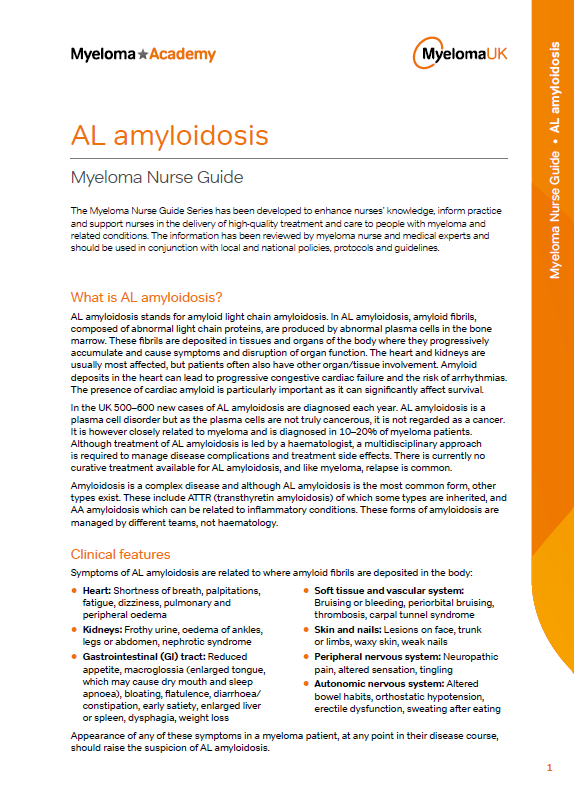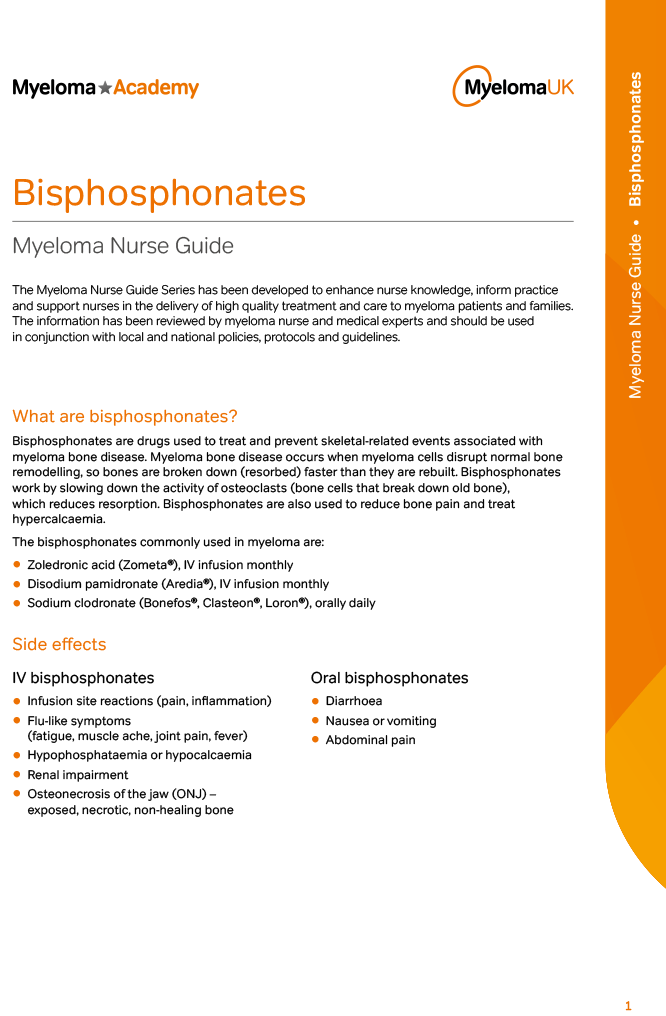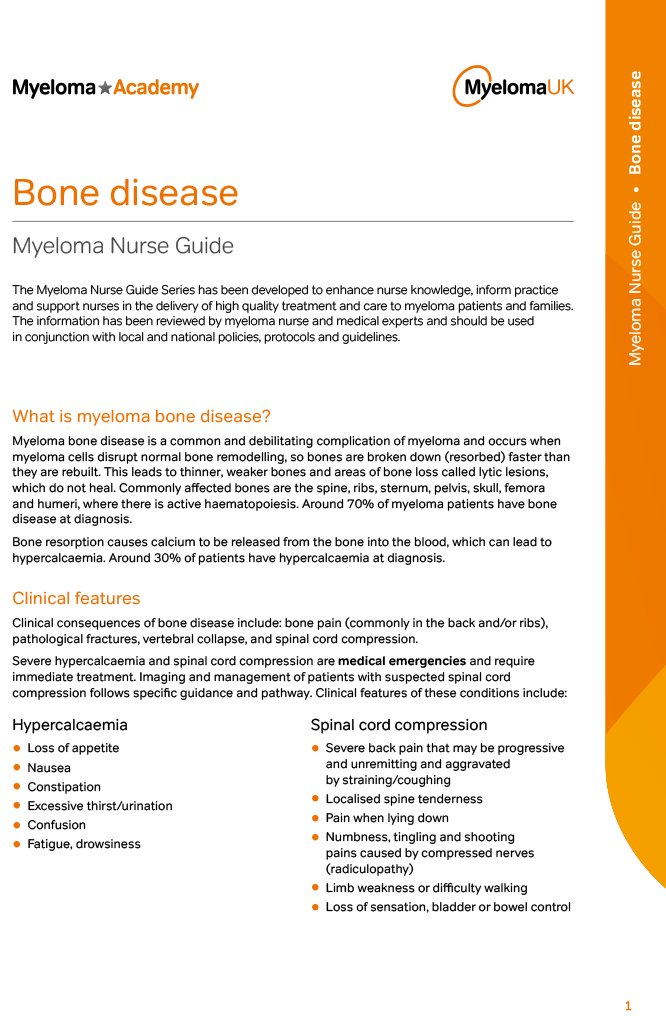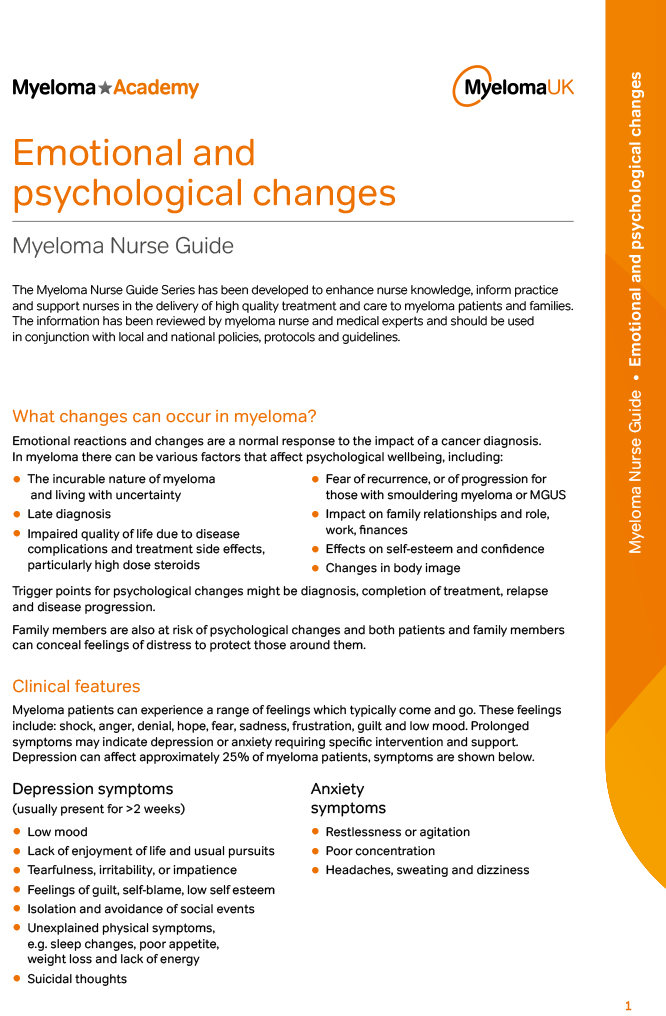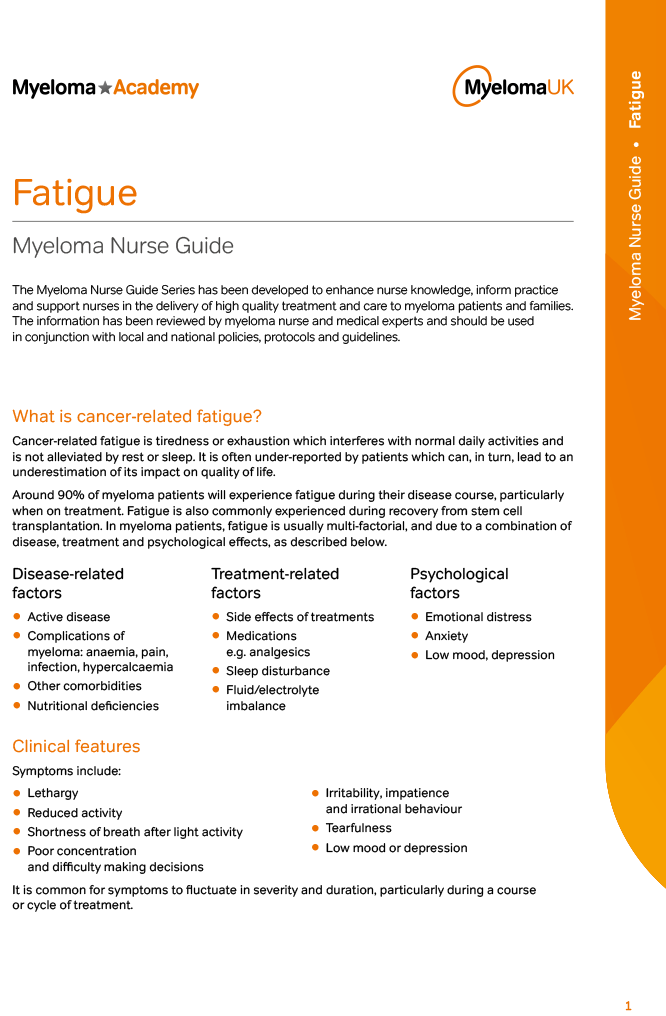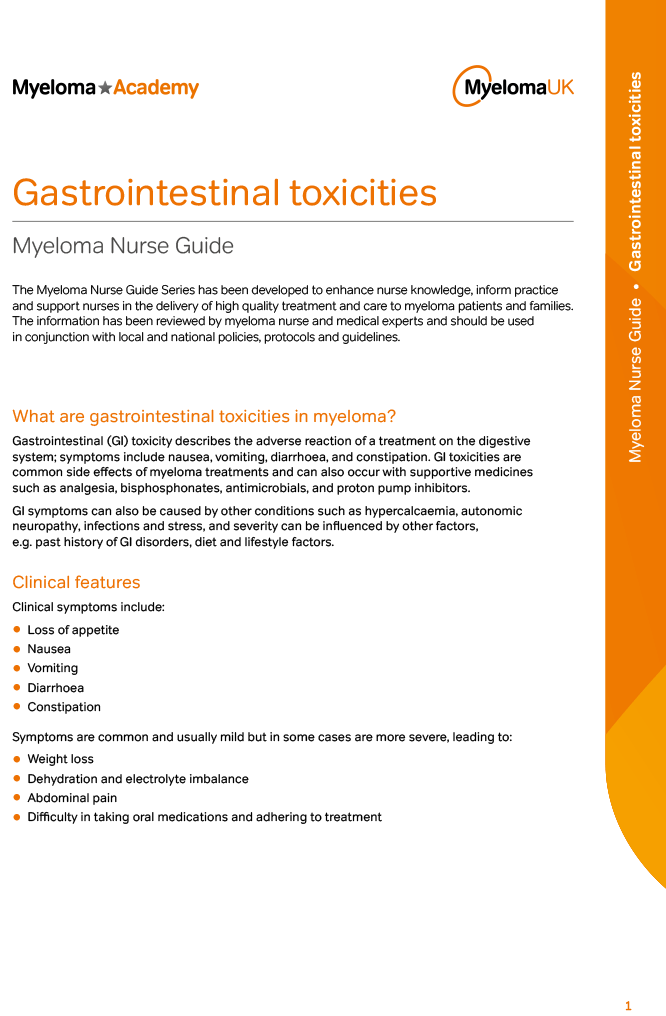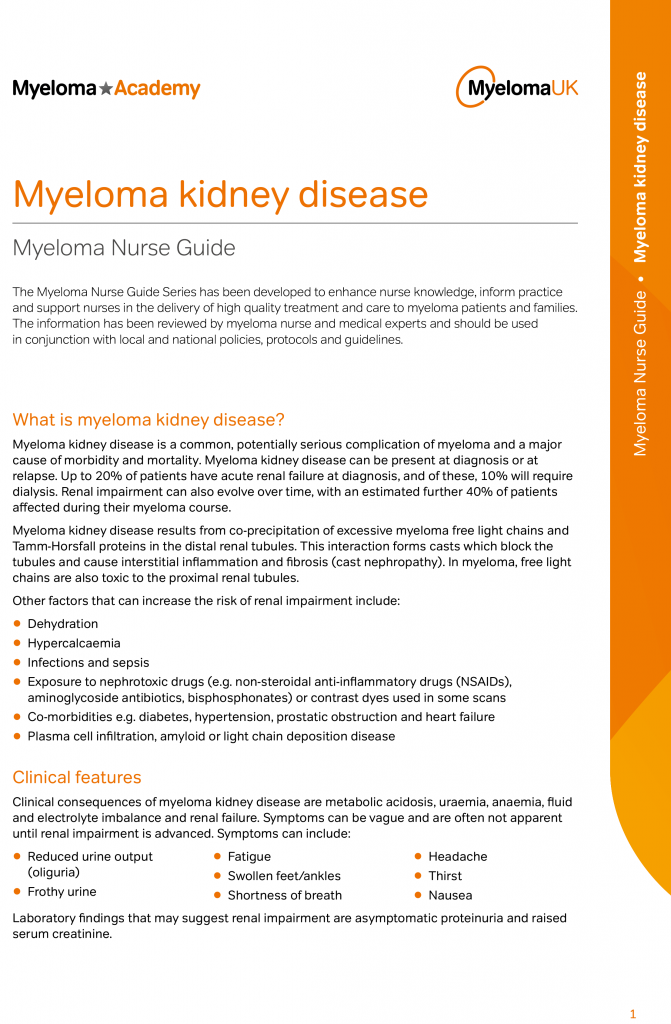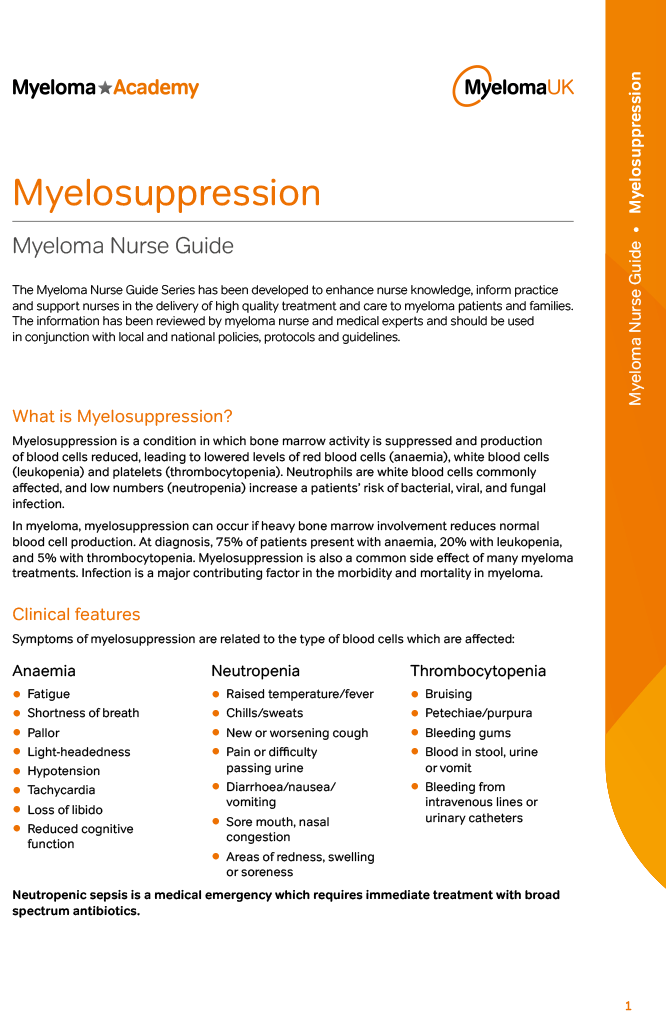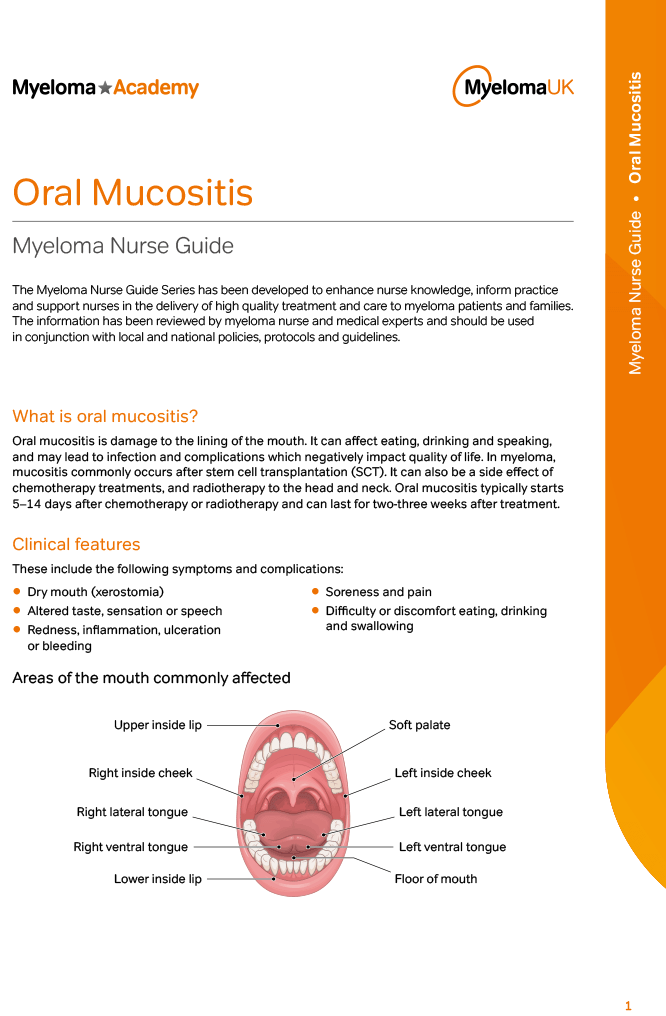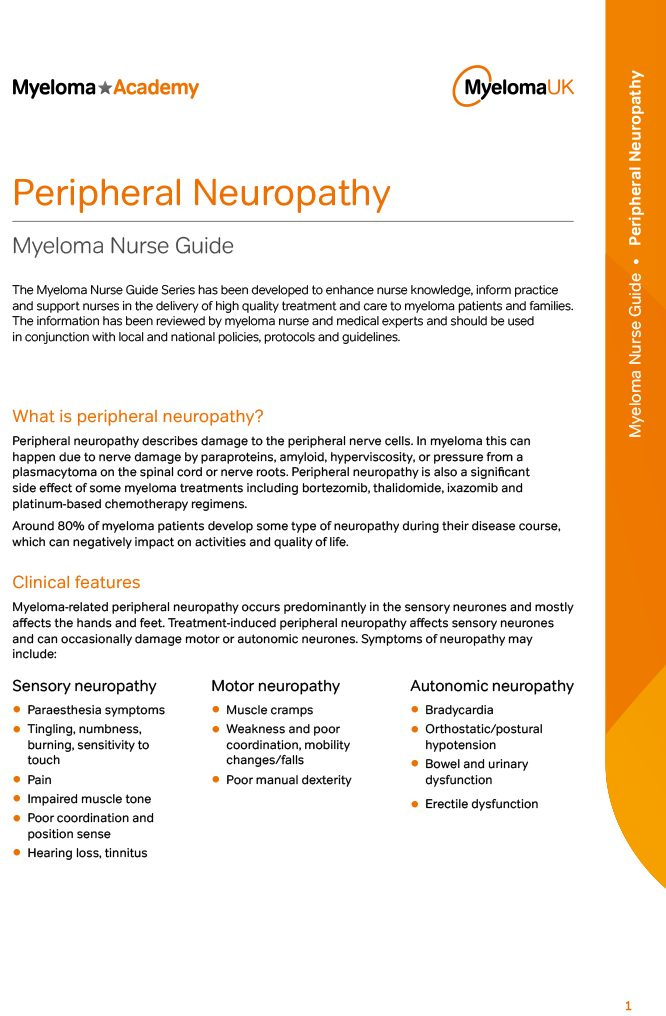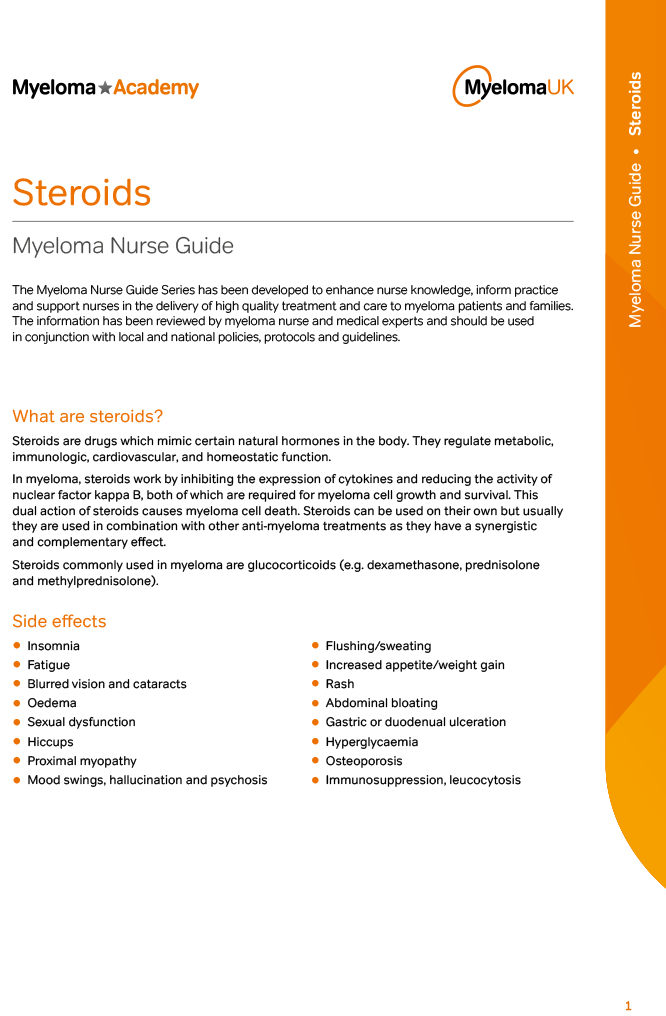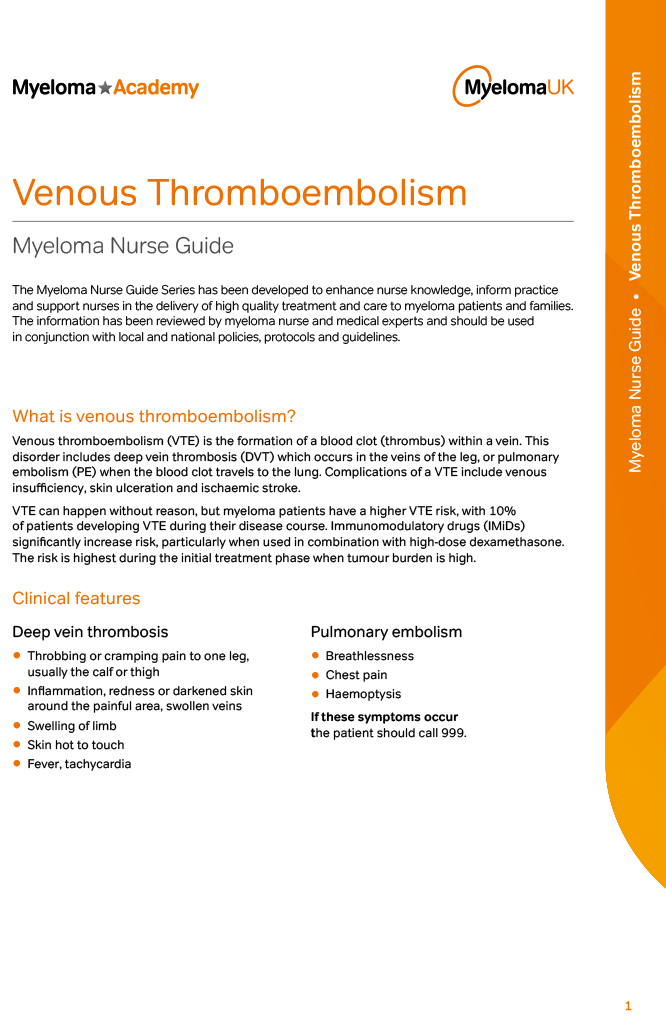The Myeloma Nurse Guide Series has been developed to enhance nurse knowledge, inform practice and support nurses in the delivery of high quality treatment and care to myeloma patients and families.
Each of these concise guides covers the key points for nurses caring for patients experiencing complications and treatment side effects. Also included are links to relevant assessment tools and patient information.
The information has been reviewed by myeloma nurse and medical experts and should be used in conjunction with local and national policies, protocols and guidelines.
We really appreciate feedback on all of our professional resources. After reading our guides please let us know what you think by completing the evaluation survey here.
Hard copies of all guides can be ordered by emailing academy-admin@myeloma.org.uk

